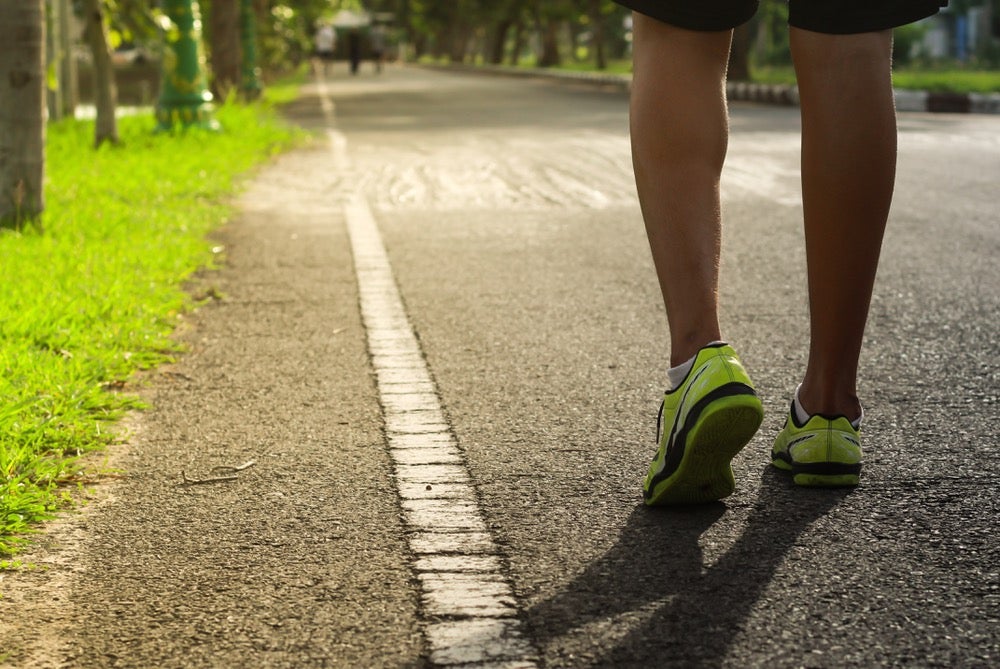Pain 101 for Triathletes: Push Through or Lay Off?

Photo: Shutterstock.com
Pain is the Air-Raid siren of the body. There’s a positive level of stress, and research shows that bone, and possibly even cartilage, responds to the stress of exercise by getting stronger. At some point though—after some combination of too much, too hard, or too often—training stress becomes a negative, overwhelming the body’s ability to respond. This process can play out as a gradual increase in soreness over days/weeks or sudden onset of sharp pain mid-activity.
The source of that pain is one issue to address. But if you keep training through it, you must pay attention to whether or not it alters your form. Because when we feel pain, our body, independent of conscious thought, often changes how it moves in an effort to decrease the pain, possibly causing weakness, stiffness and other issues that may lead to additional injury or poor performance.
These limps, hitches and the like, something the sports medicine community terms “compensation,” are the enemy of strength and proper function. Though weakness in key areas—outside hip, quad, calf—can lead to greater risk of overuse injury, the reverse can be true as well. In other words, pain can lead to weakness when muscles or joints aren’t used normally.
For instance, several studies have shown that pain alters normal running mechanics. One such study, published in Medicine and Science in Sports and Exercise, found that those with chronic kneecap pain minimized joint movement of their legs with running, manifesting as ‘stiff-legged’ running.
Unfortunately, the eventual price to be paid for these or similar compensations can be frustratingly large, including more injuries.
Triathletes are notorious for pushing through pain and dysfunction in a quest to continue training or make it to a big race, so when can you opt to push through, and when should you back off?
The following rules, taken from a recent article in the journal Current Sports Medicine Reports, aim to give endurance athletes, and the physicians that treat them, a tool to assess pain with exercise.
The Pain Rules—Stop If You Feel
- Increasing or Sharp Pain: Pain that increases during a running session should be avoided, and the activity should be reduced or stopped immediately. If the pain changes from achy to sharp, the activity should be stopped.
- Pain That Lasts Beyond Exercise: Joint pain should not persist or increase after exercise, because this indicates the body was not prepared for the running volume of that session.
- Pain That Gets Worse: If joint pain is already present (less than 3 out of 10), the pain should not worsen during the exercise session or last into the next day.
- Pain That Causes A Limp: If the pain causes a limp or change in walking or running mechanics, the exercise volume must be reduced or the exercise must stop until normal mechanics can be re-established. Persistent changes in gait due to pain interfere with normal tissue healing and may increase the risk of further injury.
Triathletes, like many endurance athletes, are often highly motivated but stubborn. Running, cycling or swimming through pain often turns a small injury, one that might take days to resolve, into a large problem, requiring more serious interventions. Physical therapy clinics are filled with endurance athletes rehabbing injuries that they thought would go away but never did.
If pain becomes a problem—indicated by the above rules—shift training away from the troublesome discipline. If an Achilles is sore with running, get on the bike where it doesn’t affect your form. If a shoulder hurts after too many yards in the pool, try working on running and cycling.
Often overuse injuries are as much about psychology as they are physiology. We are afraid to modify or stop training in fear that it will harm fitness, while in actuality, a week off of normal training—especially when cross-training—might result only in a miniscule loss of fitness. However pushing through the pain of injury can cost a great deal more.